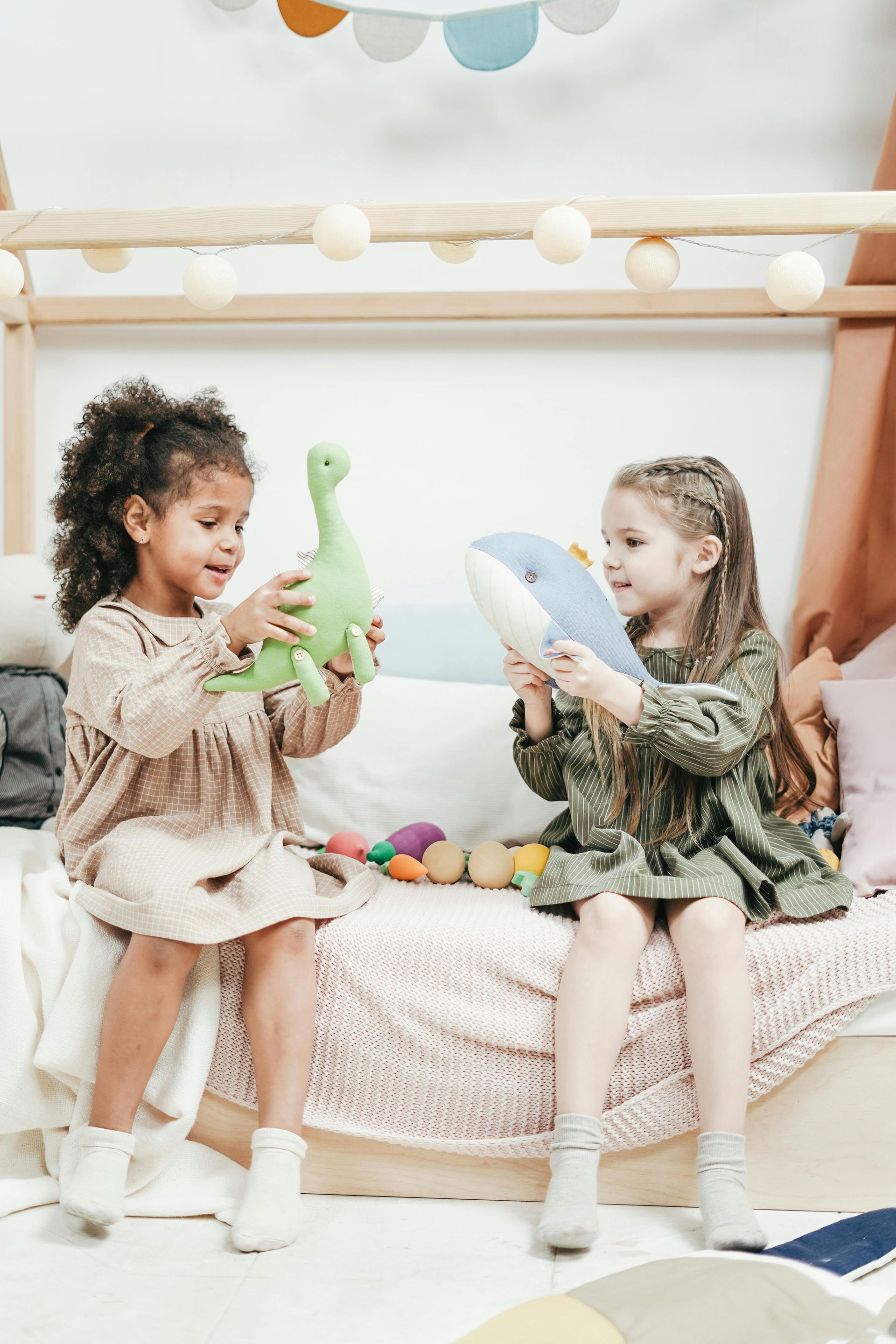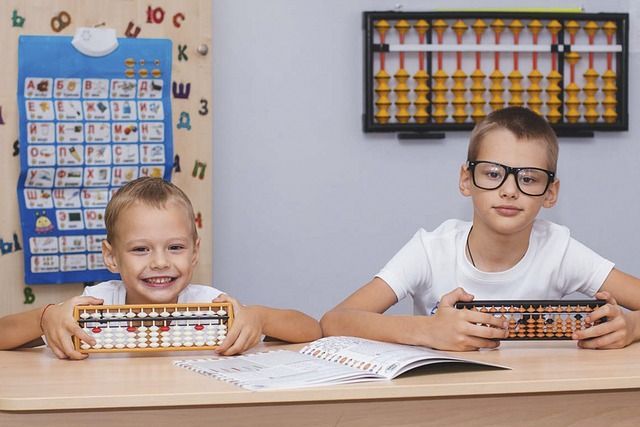Simple Tips on How to Help Your Child Make Friends
Friendship doesn’t always come easy for kids. Some jump right in, while others hang back, unsure of what to say or do. As a parent, you may wonder how to help your child make friends in school without pushing too hard. The truth is, friendship in kids is a skill—just like reading or riding a bike—that grows with guidance, practice, and support. When you focus on building healthy friendships for kids, you’re not only helping them fit in today, but also giving them tools that last a lifetime.
Understanding Your Child’s Social World
Learning how to help your child make friends in school starts with knowing the world they step into every day. A classroom is more than desks and books—it’s a mix of groups, shared jokes, and unspoken rules. For some kids, this feels exciting. For others, it can feel like trying to crack a secret code.
When you take time to notice this social world, you set the stage for healthy friendships for kids. You’ll be ready to guide them in ways that actually fit their needs instead of guessing.
What You Should Know
- Every child’s world is different. Each school has its own social style. Ask your child who they spend time with and where they feel most comfortable.
- Friends shape behavior. Kids often copy what their peers do, so it helps to talk about what makes a good friend.
- Social life can feel big and scary. If your child feels nervous or overwhelmed, that’s normal. A gentle talk can ease their worries.
- Comfort zones matter. Kids usually bond best in familiar spots—recess, lunch, or favorite classes.
- Open talk builds trust. Let your child share their social wins and struggles without judgment.
Myths and Truths
- Myth: Making friends should be quick and easy.
Truth: Friendship in kids grows over time, with practice. - Myth: Friends have to be just like your child.
Truth: Sometimes differences make the strongest friendships. - Myth: Having only a few friends means something is wrong.
Truth: A small circle of close friends can be just as healthy as a big group.
Quick Growth Hacks
- Ask your child to describe their “dream friend.”
- Visit school during recess or lunch to see social groups in action.
- Encourage your child to look for friendly cues like smiles or shared interests.
- Use storybooks or movies to spark talks about friendship in kids.
- Practice simple conversation starters.
- Praise every small social success.
Mistakes to Avoid
- Forcing friendships or pushing kids into groups they don’t like.
- Filling their schedule with too many social activities.
- Ignoring or brushing off their feelings.
- Comparing your child’s social life to others.
- Jumping in too quickly to solve every small conflict.
- Overlooking signs of bullying or exclusion.
Recognizing Personality Types and Social Preferences
Not every child makes friends the same way. Some love being in the middle of a crowd, while others prefer one close buddy. Understanding your child’s style is a big part of learning how to help your child make friends in school. When you respect who they are, you make space for healthy friendships for kids that feel real and lasting.
What You Should Know
- Introverts and extroverts connect differently. Quiet kids may like deeper one-on-one talks, while outgoing kids enjoy group fun.
- Watch how your child reacts. Do they like hanging back or do they dive into groups? Their comfort zone is a clue.
- Energy levels matter. Some kids get tired in big crowds, while others thrive.
- Self-awareness builds confidence. When kids know their own social style, they stop worrying about “fitting in.”
- Similar preferences make bonding easier. While opposites can click, kids often find it smoother to connect with those who share their style.
Myths and Truths
- Myth: Shy kids don’t want friends.
Truth: Many shy kids want friends deeply—they just need safe spaces to connect. - Myth: Outgoing kids never struggle socially.
Truth: They can still face peer pressure or talk too much. - Myth: Kids should go to every party or event.
Truth: Forcing it can cause stress; letting kids choose builds confidence.
Quick Growth Hacks
- Try fun personality quizzes designed for kids.
- Ask them to draw or journal about social experiences.
- Role-play social scenes that fit their style.
- Plan “quiet play” time if your child needs breaks.
- Suggest clubs or hobbies that match their personality.
- Teach that it’s okay to step back from socializing sometimes.
- Celebrate your child’s unique way of making friends.
Mistakes to Avoid
- Trying to change who your child is at their core.
- Labeling them with harsh words like “too shy.”
- Pushing them too hard into uncomfortable situations.
- Ignoring signals like fidgeting or pulling away.
- Thinking personality is the same as social skill—skills can be learned.
- Forgetting to reflect on your own personality and how it shapes expectations.
Supporting Emotional Intelligence for Friendship
Strong friendships don’t just happen—they grow when kids can understand feelings, both their own and others’. Emotional intelligence is the glue that holds relationships together. Teaching empathy, self-control, and awareness is one of the best ways to support healthy friendships for kids.
What You Should Know
- Naming feelings helps. When kids can say “I’m sad” or “I feel nervous,” they handle social moments with more confidence.
- Empathy builds trust. When children think about how others feel, they become better friends and solve problems with kindness.
- Managing emotions avoids conflict. A child who can calm down instead of exploding gets along better with peers.
- Parents should model it. Show your child how you handle frustration or joy—they’ll copy what they see.
- Practice makes progress. Simple role-plays or “what if” questions help kids practice emotions in safe ways.
Myths and Truths
- Myth: Emotional intelligence can’t be taught.
Truth: Every child can learn these skills with practice. - Myth: Sharing every feeling always helps friendships.
Truth: Timing and balance matter—oversharing can push peers away. - Myth: It’s only about others’ feelings.
Truth: Kids also need self-awareness to grow strong friendships.
Quick Growth Hacks
- Make a “feelings chart” kids can point to when words are hard.
- Pause a show or story to ask, “How do you think that character feels?”
- Teach calming tricks like deep breathing or counting to ten.
- Praise your child when they handle tough feelings well.
- Use turn-taking games to build patience and emotional control.
Mistakes to Avoid
- Criticizing kids for showing emotions.
- Ignoring tantrums or tears instead of guiding through them.
- Assuming kids automatically know what others feel.
- Forcing them to talk about feelings before they’re ready.
- Forgetting to model healthy emotions yourself.
- Overlooking small wins, like taking a deep breath instead of yelling.
Encouraging Communication Skills
Friendship in kids often starts with a simple “Hi” or “Can I play?” Strong communication helps those small moments grow into real bonds. Teaching your child how to listen, share, and read social cues is a powerful way to help children build healthy friendships.
What You Should Know
- Practice builds skill. Kids get better at talking and listening when they have safe chances to try.
- Listening matters as much as talking. When kids pay attention, their friends feel valued.
- Body language counts. Smiles, eye contact, and posture all send signals.
- Simple starters work. Short phrases like “Want to play?” give kids confidence.
- Questions keep things going. Curiosity shows interest and keeps conversations alive.
Myths and Truths
- Myth: Good communicators are born, not made.
Truth: Communication is a skill every child can learn. - Myth: Talking more means better skills.
Truth: Quality and respect matter most. - Myth: Kids naturally know how to talk with peers.
Truth: Many need coaching and practice.
Quick Growth Hacks
- Role-play school chats at home.
- Use toys or puppets to practice conversations.
- Teach your child to notice friendly body language.
- Try “conversation cards” with fun questions.
- Share stories at family time to build speaking skills.
- Model turn-taking in your own talks at home.
Mistakes to Avoid
- Correcting speech too harshly—it can scare kids off from trying.
- Ignoring body language when guiding communication.
- Giving too much advice at once—stick to small steps.
- Skipping praise for small wins.
- Assuming exposure alone will teach kids how to talk.
- Brushing off small talk—it’s often where friendships begin.
Promoting Shared Activities and Interests
One of the easiest answers to how to help your child make friends in school is through shared activities. When kids play, learn, or create together, friendships often form naturally. Hobbies and group fun give them common ground, which makes starting conversations less scary and helps build healthy friendships for kids.
What You Should Know
- Shared interests spark connection. Kids bond faster when they both love the same game, sport, or hobby.
- Trying new things expands circles. Clubs, teams, or classes introduce kids to peers they might not meet otherwise.
- Smaller groups can be better. Quiet settings often make friendship in kids easier than loud, crowded ones.
- Encouragement matters. Let kids explore new activities without pushing too hard.
- Fit is important. Pick activities that match your child’s schedule and energy.
Myths and Truths
- Myth: Kids only click with those just like them.
Truth: Shared activities can bring very different kids together. - Myth: Sports are the best way to make friends.
Truth: Art, music, and clubs work just as well. - Myth: Joining an activity guarantees friends.
Truth: Kids may still need guidance to connect.
Quick Growth Hacks
- Try trial sessions of different clubs and let your child choose.
- Plan playdates around favorite activities.
- Encourage your child to invite a classmate to join a hobby.
- Celebrate even small wins in activities—they build confidence.
- Suggest cooperative games that teach teamwork.
- Help your child keep an “interests journal” to track what excites them.
Mistakes to Avoid
- Forcing kids into activities they don’t enjoy.
- Ignoring your child’s input when choosing.
- Packing their schedule too tightly.
- Focusing only on the activity without teaching social skills.
- Overlooking chances in non-sport activities.
- Skipping prep for the social side of activities, like introductions.
Guiding Your Child Through Social Challenges
Even strong friendships hit bumps. Arguments, jealousy, or being left out can feel huge to a child. Knowing how to help your child make friends in school also means teaching them how to handle setbacks. With your guidance, these tough moments can turn into lessons that build healthy friendships for kids.
What You Should Know
- Conflicts are normal. Disagreements teach kids problem-solving and empathy.
- Open talk helps. Let your child share struggles without fear of judgment.
- Teach calm responses. Show them ways to handle rejection, like finding new playmates or talking with a teacher.
- Balance support with independence. Step in only when needed—kids grow by solving problems themselves.
- Watch for bullying. Step in quickly if conflicts become harmful.
Myths and Truths
- Myth: Avoiding conflict keeps friendships safe.
Truth: Working through challenges makes them stronger. - Myth: Parents should always fix problems.
Truth: Kids learn more by trying first with your guidance. - Myth: Being excluded once means the friendship is over.
Truth: Friendships in kids shift—exclusion doesn’t always last.
Quick Growth Hacks
- Role-play common conflicts and practice solutions.
- Encourage journaling after tough social moments.
- Share your own childhood stories to show struggles are normal.
- Teach “I feel” phrases for calm expression.
- Point out different perspectives in stories or shows.
- Help your child know which adults at school they can trust.
Mistakes to Avoid
- Overreacting to small disagreements.
- Interrupting your child when they’re solving problems.
- Ignoring signs of bullying.
- Speaking badly about peers—it can hurt trust.
- Expecting instant fixes—friendship growth takes time.
- Brushing off their feelings as “not a big deal.”
Collaborating with Teachers and School Staff
Teachers and school staff see your child’s social world in action every day. They notice patterns you might miss and can help guide friendship in kids. Working with them is one of the smartest ways to help your child make friends in school and support healthy friendships for kids.
What You Should Know
- Teachers see daily dynamics. They can point out classmates who share your child’s interests.
- Counselors have resources. Many schools run small groups or programs that build social skills.
- Regular talks help. Sharing your child’s strengths and struggles gives teachers a clearer picture.
- Advocacy matters. Let staff know what works best for your child so they can support in class.
- Respect privacy. Any plan should protect your child’s dignity.
Myths and Truths
- Myth: Teachers don’t have time for friendship issues.
Truth: Many see social growth as part of their job. - Myth: Asking for help means your child is failing socially.
Truth: Partnering with staff is proactive and positive. - Myth: Teachers can fix everything.
Truth: Family and school need to work together.
Quick Growth Hacks
- Schedule short check-ins with teachers about social progress.
- Ask about clubs or groups where your child might connect.
- Look into peer buddy or mentoring programs if available.
- Share what strategies work at home so staff can be consistent.
- Encourage group projects at school to build teamwork.
Mistakes to Avoid
- Assuming teachers know without you telling them.
- Expecting staff to handle everything alone.
- Skipping follow-ups after meetings.
- Ignoring privacy boundaries.
- Forgetting that families remain the main social coaches.
- Overlooking positive feedback from staff instead of celebrating it.
Helping Your Child Build Confidence
Confidence is the spark that helps kids reach out and say, “Want to play?” Without it, even simple steps toward friendship can feel scary. Building confidence is one of the most powerful ways to help your child make friends in school and support healthy friendships for kids.
What You Should Know
- Confidence grows slowly. Each small win—like saying hello or sharing a toy—adds up.
- Praise effort, not perfection. Encouraging tries, even when they don’t go perfectly, builds courage.
- Body language matters. Smiling, standing tall, and making eye contact can make kids feel more confident inside.
- Face fears gently. Push a little at a time, with support, so social fears shrink instead of grow.
- Self-talk shapes confidence. Teach kids to replace “I can’t” with “I’ll try.”
Myths and Truths
- Myth: Confidence is something kids either have or don’t.
Truth: Confidence can be built with steady practice. - Myth: Overconfidence is always better.
Truth: Balance matters—confidence mixed with kindness creates lasting friendships. - Myth: Kids should “tough it out” alone.
Truth: Support and encouragement give them the courage to keep trying.
Quick Growth Hacks
- Celebrate every attempt, not just success.
- Use short affirmations like “I am a good friend.”
- Let them try new activities with a buddy for backup.
- Practice greetings in fun, low-pressure settings.
- Teach them to share fun facts or hobbies to start conversations.
- Model confidence in your own social life.
- Keep a “confidence jar” where kids add notes of brave moments.
Mistakes to Avoid
- Criticizing when social efforts don’t go well.
- Comparing your child to others.
- Expecting instant changes.
- Ignoring signs of nervousness.
- Forgetting to reflect on past social wins.
- Protecting them too much from small risks.
Setting Realistic Goals for Social Growth
Friendship in kids doesn’t happen overnight. Setting small, realistic goals can guide your child step by step. This keeps progress from feeling overwhelming and makes it easier to help your child make friends in school while building healthy friendships for kids.
What You Should Know
- Goals should be clear and small. Instead of “make friends,” try “say hi to one new classmate.”
- Progress matters more than perfection. Celebrate effort, not just outcomes.
- Involve your child. Let them help set goals so they feel in control.
- Visual reminders help. Use charts or checklists to track wins.
- Stay flexible. Adjust goals if your child feels stressed.
Myths and Truths
- Myth: Goals should always be big.
Truth: Small steps are easier and build steady progress. - Myth: Failing a goal means failure at friendship.
Truth: Setbacks are part of learning. - Myth: Parents should decide all the goals.
Truth: Kids work harder when they help set them.
Quick Growth Hacks
- Create weekly social goals that match your child’s comfort.
- Reward effort with fun experiences, not just treats.
- Reflect each week on what worked and adjust.
- Break bigger challenges into tiny steps.
- Use stories or role-play to show how goals work.
- Set fun group goals with friends or siblings.
- Share your own goals to model the process.
Mistakes to Avoid
- Setting goals too high or too many at once.
- Ignoring your child’s input.
- Forgetting to celebrate progress.
- Using punishment or pressure when goals aren’t met.
- Leaving goals vague without clear steps.
- Refusing to adjust goals when needed.
Modeling Positive Social Behavior
Kids learn more from what you do than what you say. When you show kindness, respect, and good listening, you’re teaching by example. Modeling positive behavior is one of the simplest ways to help your child make friends in school and encourage healthy friendships for kids.
What You Should Know
- Children copy what they see. Your everyday actions—how you greet neighbors or solve problems—teach more than lectures.
- Consistency builds trust. Doing it the same way every time reinforces the lesson.
- Mistakes can teach too. When you admit an error and fix it, your child learns resilience and honesty.
- Talk about your choices. Explain why you treated someone kindly so your child connects the dots.
- Role models go beyond parents. Friends, relatives, and mentors all shape friendship in kids.
Myths and Truths
- Myth: Kids only listen to what parents say.
Truth: They copy what parents do. - Myth: Modeling only matters for young kids.
Truth: Kids of all ages watch and learn. - Myth: Parents should hide their social flaws.
Truth: Showing how you recover from mistakes teaches strength.
Quick Growth Hacks
- Practice active listening during family talks.
- Use polite words even in tough moments.
- Share stories of kindness you’ve seen.
- Do small acts of kindness together.
- Role-play social scenes at home.
- Show empathy openly—let your child see you care.
- Praise honesty and fairness when you see it.
Mistakes to Avoid
- Saying one thing but doing another.
- Expecting kids to copy behavior instantly.
- Ignoring the influence of your own friends or family.
- Skipping self-reflection on your own habits.
- Correcting kids too harshly when they don’t copy perfectly.
- Thinking modeling alone is enough—kids also need direct teaching.
Utilizing Playdates and Group Opportunities
Playdates and group activities are practice grounds for real friendships. They give kids the chance to connect outside the classroom, where the pressure feels lower. Knowing how to help your child make friends in school also means giving them safe, fun chances to practice social skills at home or in the community. These small steps build healthy friendships for kids that can last.
What You Should Know
- Playdates deepen bonds. One-on-one or small group play often creates stronger connections than quick chats at school.
- Mix structure and free play. Too much planning can feel stiff, while open time encourages creativity and teamwork.
- Preparation reduces stress. Talking about what to expect helps kids feel ready.
- Your role may shift. Some kids need you close by, while others thrive with space.
- Follow-up matters. Talk afterward about what went well and what could be better.
Myths and Truths
- Myth: Playdates need to be long and packed with activities.
Truth: Short and simple often works best. - Myth: Parents always need to be deeply involved.
Truth: Sometimes space helps kids build independence. - Myth: Playdates guarantee instant friendship.
Truth: They create chances, but friendships in kids still take time.
Quick Growth Hacks
- Start with short playdates, then build up.
- Pick familiar places like home or a favorite park.
- Have a few games or activities ready to ease into play.
- Team up with other parents to share insights.
- Encourage your child to invite classmates or neighbors.
- Try group outings—like museums or sports—to widen circles.
- Keep the schedule flexible so kids don’t feel rushed.
Mistakes to Avoid
- Overplanning every detail.
- Hovering too closely, especially with shy kids.
- Missing signs your child needs a break.
- Using playdates as punishment or reward.
- Scheduling too many in a row—downtime is important too.
- Expecting instant friendships after one or two meetups.
Navigating Digital Friendships and Social Media
Today, friendship in kids often stretches beyond the playground. Texting, online games, and social media give children new ways to connect. Learning how to help your child make friends in school also means guiding them in digital spaces, where both risks and rewards exist. Done right, online connections can support healthy friendships for kids.
What You Should Know
- Online friends can be real friends. Digital bonds can feel just as strong as in-person ones.
- Set boundaries together. Talk about screen time, privacy, and what’s safe to share.
- Stay aware without spying. Ask about their online world so they feel open, not watched.
- Teach critical thinking. Kids should learn that not everything online is true or kind.
- Promote kindness online. Encourage respectful language in chats, games, and posts.
Myths and Truths
- Myth: Online friends don’t count.
Truth: Many kids find real support and connection online. - Myth: Kids don’t need help with digital life.
Truth: Guidance helps keep online friendships safe and positive. - Myth: More screen time means better friendships.
Truth: Balance between online and offline matters most.
Quick Growth Hacks
- Make a family agreement about online rules and privacy.
- Play games or explore apps with your child to see their digital world.
- Share fun or uplifting things found online during family time.
- Teach how to block or report harmful behavior.
- Balance screen time with in-person social chances every day.
- Encourage creative online projects like stories or art to share with friends.
Mistakes to Avoid
- Cutting off all online access—kids may hide their activity instead.
- Dismissing digital friendships as “not real.”
- Forgetting to update rules as kids grow older.
- Skipping talks about privacy and safety.
- Assuming online spaces are always negative.
- Leaving kids completely unsupervised online.
Conclusion
Helping kids form real connections takes patience, but it’s worth every step. When you focus on healthy friendships for kids, you give them the confidence to share, listen, and grow together. Remember, friendship in kids isn’t about having the biggest group—it’s about finding bonds that are kind, supportive, and lasting. By guiding them through challenges and showing them how to help your child make friends in school, you’re giving them skills that will serve them for life.
Want to help your school boost the confidence of every child? Check out my incredible assembly program “Smile! It’s Magic!” This program is filled with fun magic, kid-friendly humor, music, important messages, and more. Contact me today to get more details!
SHARE POST



